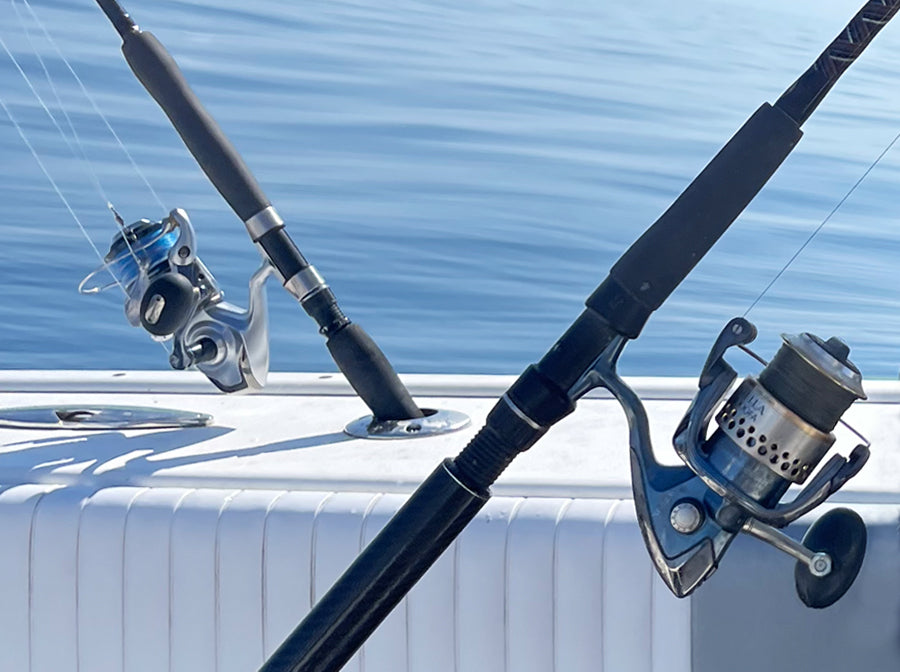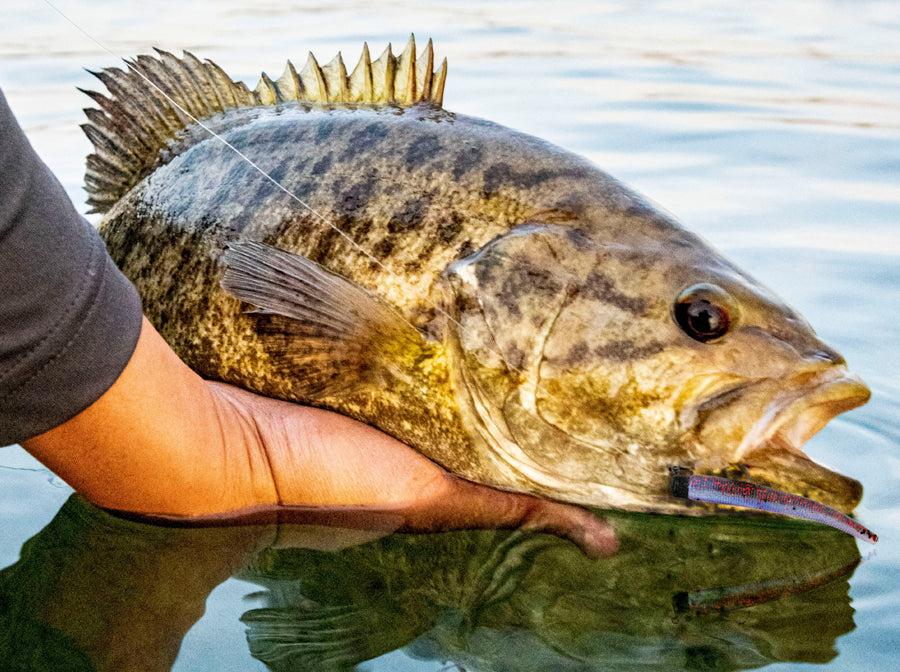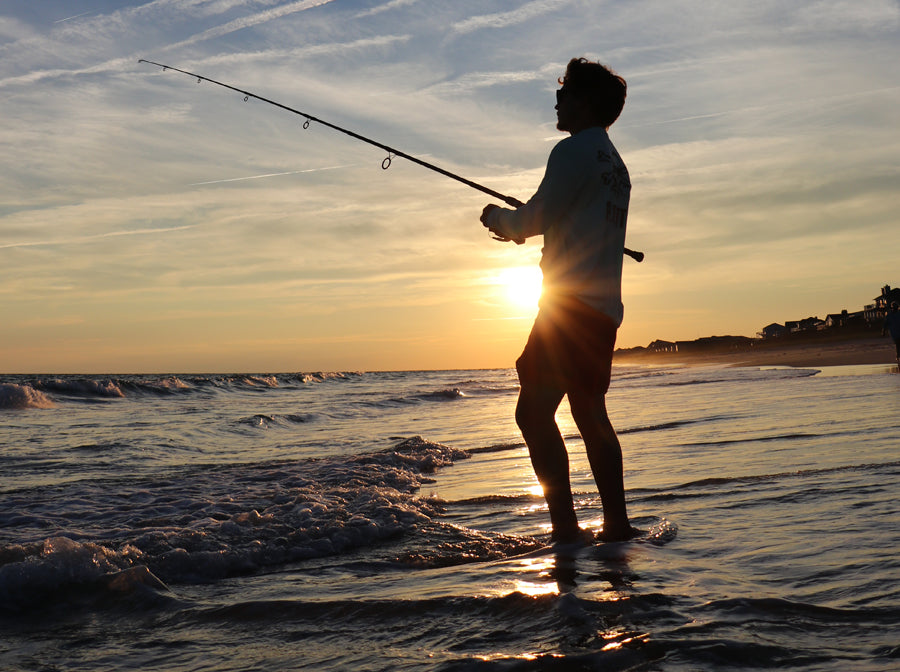If you want to increase your odds of catching a trophy fish—or simply catching fish—it always pays to be prepared. When you’re gathering your gear for the next fishing trip, don’t forget to check your fishing line. This often-overlooked item is a critical component for fishing success. The best rod and reels, tackle and fishing lures in the world are completely useless if your fishing line isn’t up to the task.
Fishing line is fishing line, right? No, not even close. Fishing line comes in many varieties, with different sizes, strengths and characteristics to consider. The number of options can be confusing to even the saltiest angler. The fish species you want to catch, the fishing technique, the baits and lures, location and water conditions all help determine which line will work best.
We created this guide to help you understand the major types of fishing line, what to look for when choosing line and how to find the best fishing line for your needs.
A combination of factors help determine which fishing line will work best.
Braided vs. Monofilament vs. Fluorocarbon
Fishing line can essentially be separated into three main categories: braided, monofilament and fluorocarbon. These three types of fishing line make up the bulk of what anglers are armed with these days. Each variety has it uses, benefits and drawbacks.
Monofilament Line
Monofilament is the most common fishing line. Anglers around the world have been fishing with monofilament line for nearly 70 years. First introduced in 1939, mono became widely popular during the 1950s. Mono works well in a variety of fishing situations, from casting for freshwater lunkers to trolling for bluewater brutes.
Pros:
- Flexible
- Casts easily and smoothly
- Stretches to prevent breaking when setting a hook and fighting a fish
- Ideal for tying knots and rigging terminal tackle
- Works well with small hooks, snaps and swivels
- Easy to spool a reel
- Excellent for new anglers
- Affordable
Cons:
- Stretch can make it difficult to set a hook in a hard-mouthed fish
- Can be tough to feel light bites or strikes due to stretch
- Mono twists, causing lures and baits to move unnaturally
Ideal Uses:
- Most freshwater and saltwater fishing
- Fishing with light tackle
- Casting longer distances
- Casting small lures and light baits
- Fishing for smaller species
Most fishing knots hold well with monofilament.
Braided Line
Braided is one of the oldest forms of fishing lines ever invented. Some of the oldest examples, dating back centuries, were fashioned from horse hair and other natural materials. Thanks to major advances in quality and performance, synthetic braided line is more popular than ever with anglers. Modern braided line offers superior abrasion resistance, excellent casting capabilities and ultra-thin diameters.
Pros:
- Highly abrasion resistant
- No stretch—helps you feel light strikes and bites
- Doesn’t twist like mono
- Helps set the hook in hard-mouthed fish
- Extra-thin diameters
- Can be used with a mono (or fluorocarbon) leader to offset most shortcomings
- Lays flat on a reel spool; has less “memory” during a cast
- Fewer wind knots
Cons:
- No stretch—easier to straighten a hook or pull the hook out of a fish’s mouth
- More expensive than mono
- Can be harder to tie knots
- Knots can come untied more easily
- Improved clinch knot and blood knot won’t hold
- Must be cut with scissors—clippers won’t cut braided line
- 10-pound test and lighter can be harder to handle and cast
- Braided is more visible to fish than mono
Ideal Uses:
- Fishing in deep water and heavy currents
- Working around structures
- Casting into weeds, moss and thick cover
- Deep-water jigging
- Hooking species with “soft bites”
- Muscling big fish quickly away from heavy cover and structure
Braided fishing line lays flat on a reel spool.
Fluorocarbon Line
Fluorocarbon fishing line was invented in 1971 by scientists at Kureha, a chemicals company in Japan. The newest of the three lines, fluorocarbon has been refined over the years and continues to improve in quality and affordability. Light passes through fluorocarbon, making it nearly invisible to fish even in crystal-clear water.
Pros:
- Most transparent fishing line available
- Zero refractive index makes it almost invisible to fish
- Lack of visibility allows anglers to use heavier pound tests
- Highly abrasion resistant
- Stretches less than mono
- Doesn’t absorb water
- Helps reduce backlashes
- Works well casting and trolling
- Reduces backlashes on spinning and baitcasting reels
Cons:
- Stiffer than many mono or braided lines
- Harder to tie knots
- Sinks faster than mono
- Not ideal for top-water lures
Ideal Uses:
- Fishing in clear water
- Fishing in heavy cover and around structure
- Fishing small lures deep
Transparent fluorocarbon line is nearly invisible to fish.
FISHING LINES FAQ
How often should I replace my fishing line?
Ask a group of experienced anglers this question and you’ll likely get answers ranging from every fishing trip to once a year to every two or three fishing seasons. As a rule of thumb, the more frequently you fish, the more frequently you’ll need to replace your line. To be on the safe side, monofilament should be changed at least once a year—more often if you fish regularly, or if you fish around structure or in heavy cover which can damage the line. Braided fishing line doesn’t need to be changed as often. Some anglers have been known to use the same braided line for several years without any problems. Fluorocarbon line has been known to last longer than mono, but typically needs to be replaced more often than braided.
How do I know if my fishing line is still good?
Unwind a few yards of line from the reel and inspect it closely for nicks, cuts and other damage. If you notice any visible damage, or if the line seems brittle to the touch, it’s time to replace it. If it looks okay, but it’s been on the reel for more than a year, it’s probably better to replace it. The old adage “it’s better to be safe than sorry” applies to fishing line.
Can you fish with last season’s fishing line?
It depends on the condition of the line. If the line saw several fishing trips last season, it’s probably wise to replace it before hitting the water again. Likewise, if you inspect the line and find abrasions or the line feels brittle, go ahead and replace it.
More Resources
How to Pick the Best Lure Color for Freshwater Fishing
The One that Got Away: Six Ways that Anglers Lose Fish







